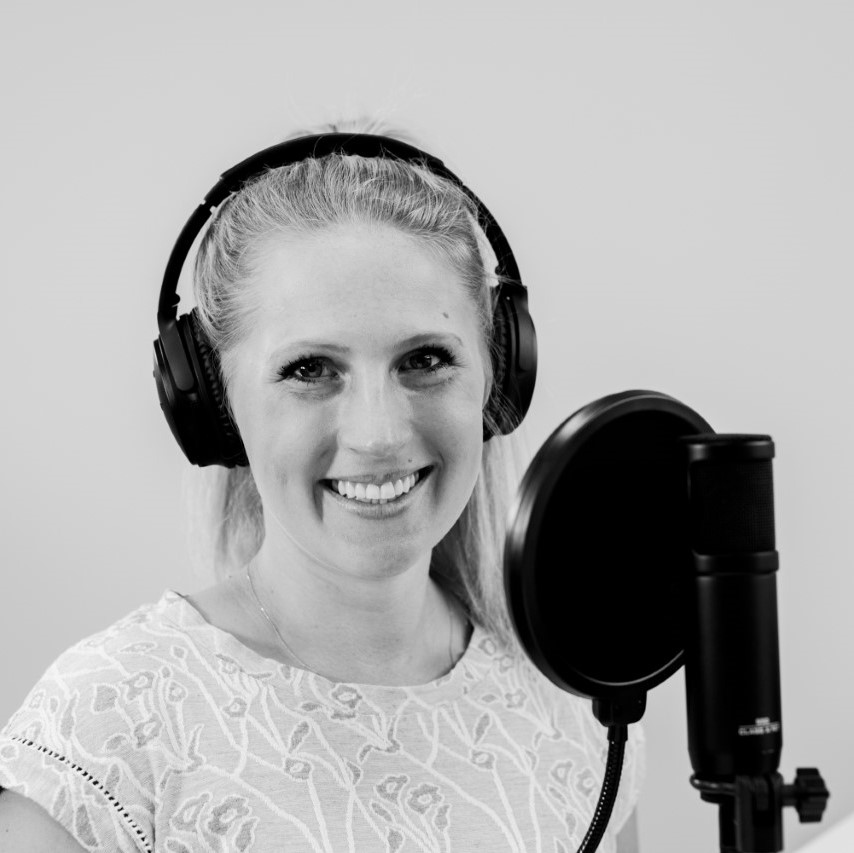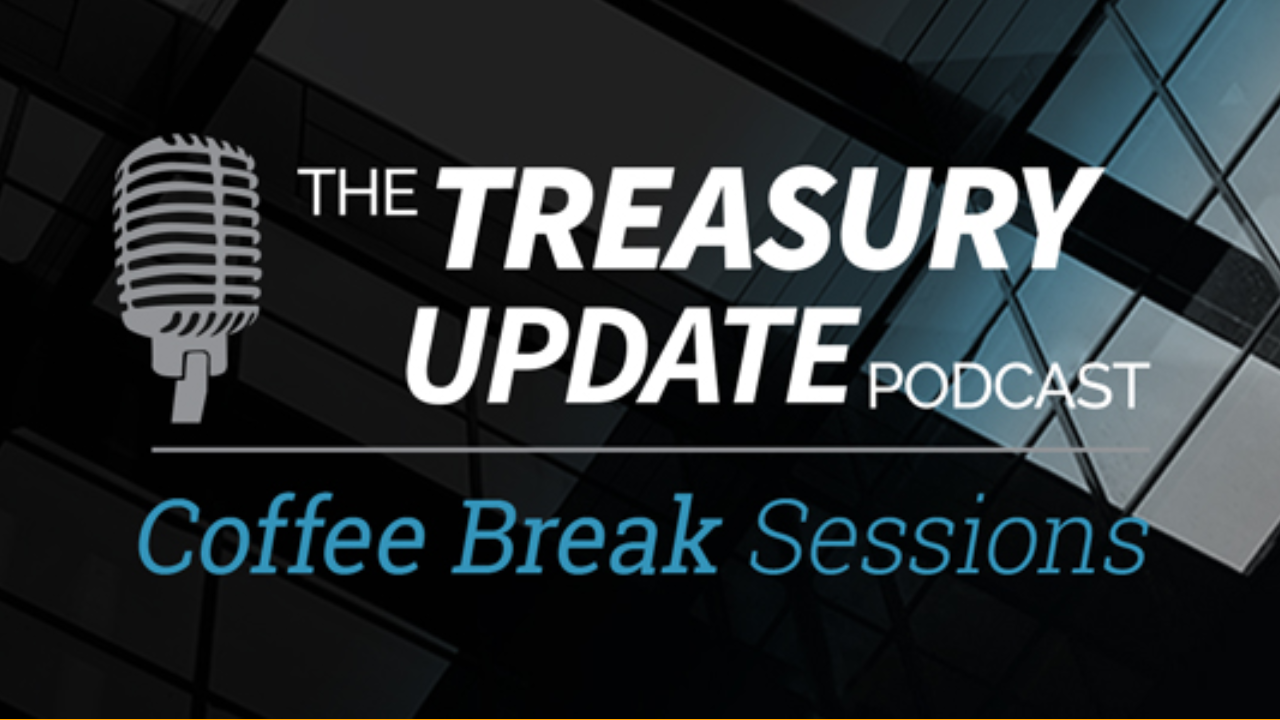
Session 15
What is a Blob?
What is a blob? Coffee Break Session Host, Alexa Cook, catches up with Craig Jeffery to discuss what treasury executives need to know about blobs. They also talk through the differences between a blob and other forms of data storage. Listen in and learn a little bit about blobs!
Host:
Alexa Cook, Strategic Treasurer


Speaker:
Craig Jeffery, Strategic Treasurer


Episode Transcription - CBS Episode 15: What is a BLOB?
Alexa:
Hey guys, welcome to the Treasury Update Podcast, Coffee Break Session. The show where we cover foundational treasury topics and questions, in about the same amount of time it takes you to drink your coffee. This is your host Alexa, and today I’m joined with Craig Jeffrey, managing partner at Strategic Treasurer. Welcome Craig.
Craig:
Thanks Alexa.
Alexa:
So today’s topic is going to be BLOB Storage. And I know in the past we’ve spoken about data lakes and a lot of our recent project work has been about data storage, business intelligence, and analytics. So why don’t we just dive right in and talk about what are BLOBS.
Craig:
That is an acronym for binary, large object. Think of it as, this is a storage area of largely unstructured data, but it can also include structured or semi-structured data. It’s a place of putting different types of data in. It could be video, or audio, or pictures, things like that. So it’s more amorphous like the BLOB of the old horror movies from, I don’t know when they were, but some long time ago.
Alexa:
Okay. So it’s not the thing that’s in the lake in the summer, like one person jumps on it and the other person flies off. That’s definitely where I think [crosstalk 00:01:26] when I think about-
Craig:
That is. Yeah. That is another thing. If we talk about data lakes and that kind of blob, yes, that might be something that people can put a picture to their mind.
Alexa:
So what do treasury executives need to know about BLOBS and BLOB storage?
Craig:
I don’t know. Not too much. They’re similar. I mean, as an executive, if you’re focused on technology, it’s going to be different, but if you’re an executive and you hear the word BLOB or data lake, they may be synonymous in terms of what people are meaning. There are differences, but it’s a way of holding the unstructured data and structured data. Usually you’re going to see that if it’s, someone’s looking at this from… We’re doing some business intelligence or running some analytics and they may use a BLOB because it’s simpler or cheaper, and they’re not getting too much data, they don’t have… It’s not as intensive on the operation, or they may use a data lake. But I just think it’s related to storage that’s different from a regular database or an enterprise data warehouse.
Alexa:
How is BLOB storage different from a data lake storage?
Craig:
You might have a table which is, X and Y axis like a single sheet spreadsheet. You might have a database which might be made up of many tables or a relational database. And then you have a data warehouse where you’ve amalgamated or brought together lots of data. And it may even be pre subtotaled. So you can query this data warehouse for your regular standard reports. That’s a place of having your type of data put into those… I don’t want to call them containers, but those structures. A BLOB is like a… It’s a storage area. And a data lake is also a storage area. Both store unstructured data, BLOBS can store structured and semi-structured data as well. They’re stored in a slightly different manner. BLOBS have containers, so you can stick all your files into containers. And they use an object store, which is a flat namespace. In other words, it’s like everything’s at the same level, but you stick them into these containers.
Craig:
And that’s similar to folders, but folders are used in data lakes typically, and it’s a hierarchical fire file system. So it’s like the main draw in your cabinet might be the first layer, the folder might be the second, a sub folder, a Manila folder inside there would be the third layer in a data lake and that’s how it’s structured. But the biggest difference is, you would use a BLOB for general purpose storage, sticking all kinds of files in there. Kind of like your junk drawer in the kitchen. You’ll put a lot of data in there. But a data lake is, I would say more organized and it’s optimized for this hyperscale storage for use with analytics, it’s optimized for analytics. It lets you have a higher throughput and IOPS, this ability to run more operations per second, to do big data analytics. Whereas the performance of a BLOB is really, it’s not optimized for analytics work. It can certainly do that, but there’s a number of uses for BLOBS. Whereas data lakes are optimized for big data analytics and that’s part of it. So I’ll stop there.
Alexa:
Okay. That makes sense. So it kind of sounds like a BLONB is, is like a junk drawer. I like how you use that as an example. And then a data Lake is almost more structured and organized. So if you were… Had the drawer next to the junk drawer, it’s maybe got the folders and the sub compartments and stuff like that, but it’s just has a little more structure around it. Did I understand that correctly?
Craig:
I think so. And since that just popped into my head when I was talking, I hope that it’s taken as a general example, not as the defining difference. But yeah, a junk drawer that can hold all kinds of things is the BLOB and the data lake is like, I can get out my forks, my knives, my spoons very quickly. It’s, more organized and there’s a different purpose. You need both, you might need both drawers in your, in your kitchen. I mean, there’s other differences between these two. And I think that’s going to be a big discussion with your data architects and your data engineers in your organization to figure out what you use and why. Access issues, using different types of federation methods like active directory.
Craig:
So in Microsoft’s world, the data Lake, you use your Microsoft Azure active directory for provisioning permissions. So it’s all hooked into your overall Federation method, whereas, like using the BLOB that uses a different method of access. And I know that’s a little over simplified, but those are a couple of the differences. The others might be relate to cost. You have to have hyper performance in a data lake. You may have a lot of stuff you need to store in a BLOB, like I need all these image files, audio files, videos it’s related to training or access, I just need access to it. I don’t necessarily need those in a data lake, but I want people to have access to them, so maybe I just throw them into the junk drawer of a BLOB and access them there. Old stuff, I can move off of hot storage, move it to cool or archival, which is less expensive because the latency’s lower. It takes you longer to recover it. And therefore, at some point the slightly better costs will come out in that type of environment.
Alexa:
So what are BLOBS? It’s a storage area for different types of data. It’s predominantly structured data, but it definitely has unstructured and semi-structured data as well. And then, treasury executives don’t really need to know a ton about BLOBS unless they’re super tech focused. And they would just really need to know that if a BLOB is being used by their organization, it’s probably for data analytics. So then a BLOB versus a data lake…The BLOB would be a more general storage area with lots of different types of data, just kind of tossed in. And then the data lake is going to be something that’s a little bit more structured, and it might work more closely with any queries or prompts or analytics that you’re running off of that data, within the data lake.
Craig:
Yeah. I think that’s a fair way to put it.
Alexa:
Do you have any final thoughts on that or anything else to add?
Craig:
Yeah, just a couple of things to summarize that as, I mean, what does treasury need to do? They need to focus on analytics and the value of analytics and know that that is important more so than understanding the plumbing or the engine behind, storage, and that’s really a specialty. But if you’re exploring, how do I leverage data for better analytics, understanding of risk, etc. If you, explore that you are going to get into the world and then the new language that covers big data, data storage, and access, and these words will creep in. And then those… The points of distinction, which are pretty minor from a treasury executive, will become more important as you dive into it in depth. But just knowing the macro elements there is probably all you need to know as an executive. So if you’re still listening, you may like data.
Alexa:
Thanks, Craig. I think that covers everything on what are BLOBS. I appreciate you joining me today.
Craig:
Thank you.
Alexa:
And then for all of our listeners, if you tune in every first and third, Thursday of the month, we’ll have a new Coffee Break Session. And as always, we love your feedback. So feel free to drop us an email@podcaststrategictreasurer.com. Thanks.
OUTRO:
This podcast is provided for informational purposes only and statements made by Strategic Treasurer, LLC on this podcast are not intended as legal, business, consulting or tax advice for more information visit and bookmark strategictreasurer.com.
Related Resources
Want access to more great content? Subscribe to Strategic Treasurer on YouTube!
A part of the Treasury Update Podcast, Coffee Break Sessions are 6-12 minute bite-size episodes covering foundational topics and core treasury issues in about the same amount of time it takes you to drink your coffee. The show episodes are released every first and third Thursday of the month with Special Host and Treasury Consultant Alexa Cook of Strategic Treasurer.




